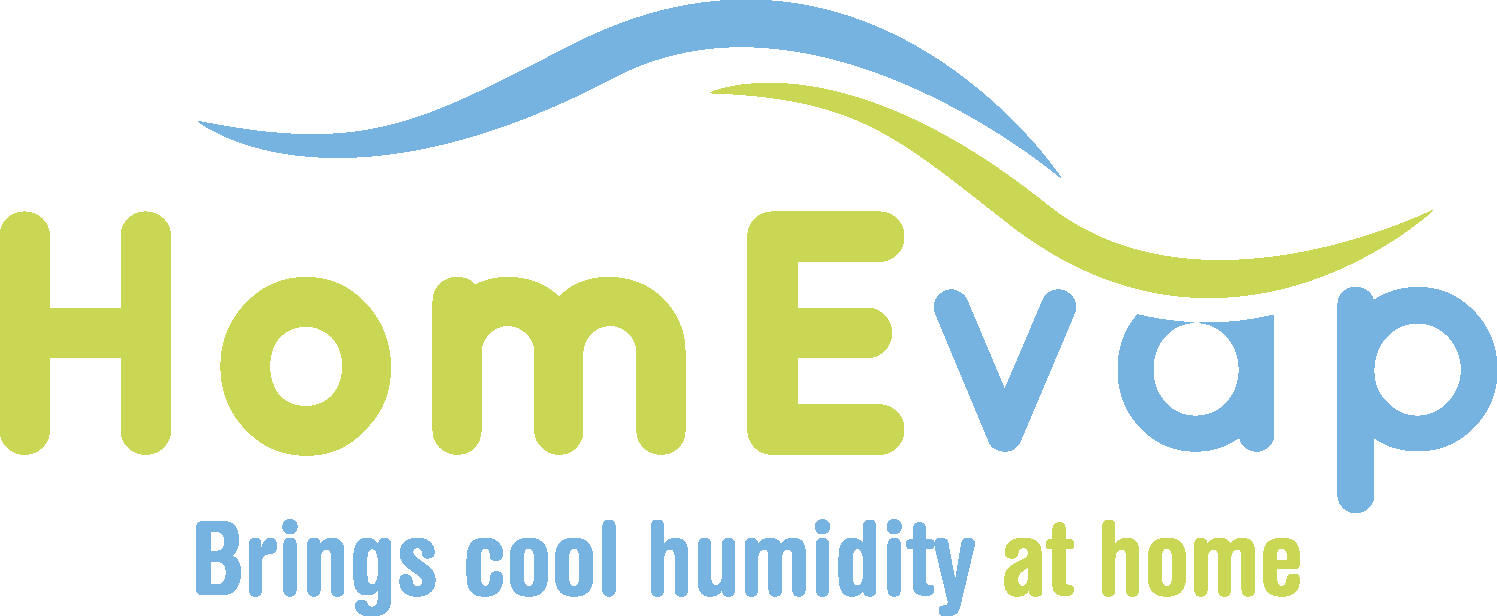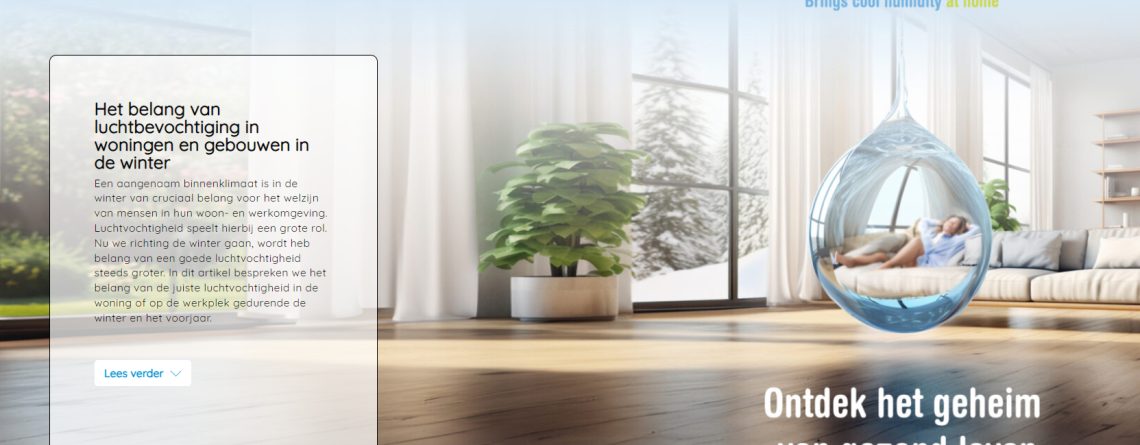The importance of humidification in homes and buildings in winter
The importance of humidification in homes and buildings in winter
A pleasant indoor climate in winter is crucial for people's well-being in their living and working environment. Humidity plays a major role in this. As we move toward winter, the importance of proper humidity is becoming increasingly important. In this article, we discuss the importance of proper humidity in the home or workplace during winter and spring.
This is the introduction to a comprehensive article in the NBD online magazine Indoor Climate, which was recently posted.
Indoor climate should be an important part of a healthy lifestyle among the Dutch. However, 56% of the Dutch pay most attention to healthy eating. 54% finds sufficient exercise most important and 51% attaches the most value to a good night's sleep. Often forgotten in this list is an important factor, namely the indoor climate. This emerges from research conducted by Gezond Binnen, the Dutch knowledge institute for indoor climate, among a thousand Dutch consumers.
The study shows that only 11 percent of Dutch consumers consider a healthy indoor climate as one of the most important aspects for their health. And that while we often spend more than 80 percent of the day indoors, especially in winter. The effects of poor air quality in the living and working environment are still unknown to many. A pity, because a healthy indoor climate brings enormous benefits. Attention to it provides more energy, better sleep, increased productivity and reduced risk of illness.
What is ideal?
The basis for a healthy indoor environment is adequate ventilation. And, in winter and spring, maintaining proper humidity in the home and office. A humidity level of 40% -60% is most ideal in the home or workplace*.

* Scofield/Sterling diagram shows how relative humidity affects health and well-being
It is especially challenging to maintain this in winter. As the outside air gets colder, its volume shrinks. This allows it to contain less water vapor. As this air warms, it grows in volume. As a result, the relative proportion of water vapor drops below 40%. And this has quite an impact on our comfort and health according to several international studies.
If this humidity falls below 40%, residents and employees experience increasingly annoying complaints in their homes and workplaces, such as: irritated eyes and airways, dry throat, headaches, fatigue, dry skin, cracked lips, frequent sneezing, static shock and an uncomfortable cold feeling.
In addition, during the COVID 19 period, diseases and viruses were shown to be transmitted through the air. If our airways are irritated by dry air, the risk, that we will get sick from this exposure, is significantly higher.
By the way, it is not only important for our well-being but also for our precious possessions; Too low humidity causes shrinking wooden floors and furniture, false wooden instruments and it also does not affect art well. Therefore, the parquet installers always recommend a humidifier in the home when installing a wood floor.
What methods of humidifying air are there?
As we mentioned above, a humidity in the home or workplace between the 40% and 60% is most ideal. You can achieve this by applying a humidifier.
There are different types of humidifiers: from standalone humidifiers that you place in the various rooms in a home or (office) building, to humidifiers that you can place directly on a WTW ventilation system.
There are also different types of humidification methods: the most well-known is boiling water; this is called isothermal humidification. The advantage is that it is warm to the touch and visible. The disadvantage is that it takes a lot of energy and you need descaled water, to avoid high costs.
Another method is the adiabatic humidification of the air. This is a smart and energy-efficient way, to keep humidity at a healthy level. It is based on the natural process of water evaporation; think of the water trays on the radiator! The water then evaporates without being visible and without requiring energy. The disadvantage is that it must be refilled continuously and its capacity is limited.
How does HomEvap's automatic adiabatic humidification work?
The HomEvap humidifier uses the existing ventilation system in the home or office. The air from the ventilation flows through the water-absorbing glass fiber matrix and absorbs the water vapor from the moist surface. This increases the relative humidity of the air blown into the home or office.
The HomEvap humidifier works automatically and safely. Is connected to the water supply and always uses fresh water. Moreover, the humidifier is equipped with a hygrostat, which turns it on or off automatically.
HomEvap - your partner for optimal comfort
Developed and manufactured in the Netherlands, the HomEvap humidifier is an ideal choice for achieving a comfortable and healthy indoor climate. Thanks to its advanced technology, HomEvap ensures accurate and constant humidification. Safety is guaranteed as it is equipped with a legionella filter, which prevents legionella contamination. Furthermore, the WTW has sufficient air volume to improve humidity capacity.
HomEvap supplies 2 models with various capacities. This makes it always possible to retrofit the humidifier to a WTW (balance) ventilation system:
- HomEvap Horizontal for horizontal airflow, so ducts are mounted parallel to the ceiling or floor.
- HomEvap Vertical for vertical airflow, so placement can be directly on the WTW or in the duct mounted vertically. This makes installation and maintenance easier.
HomEvap also has a Standalone version. This allows us to supply homes without a WTW and offices with suspended ceilings or storage rooms and archives with the right humidity. The Standalone Horizontal has been available for several years. The Standalone Vertical will hit the market next year.
Also for the combination humidify and cool air we have a good solution. So that you can create a healthy indoor climate all year round.
The humidification capacity also depends on the air volume and temperature of the air; The maximum air volume for the Horizontal is 500m3/hr for the Vertical is 750m3/hr. The capacity therefore varies between 0.5l/h to 2.5l/h. The capacity can be increased by adding an integrated preheater in 2 different capacities: 0.75kW or 1.5kW.


